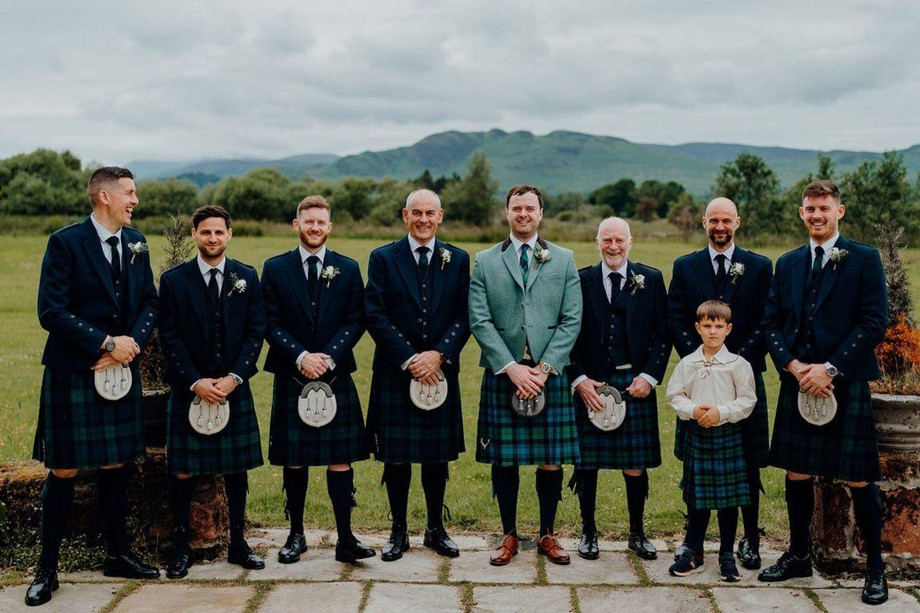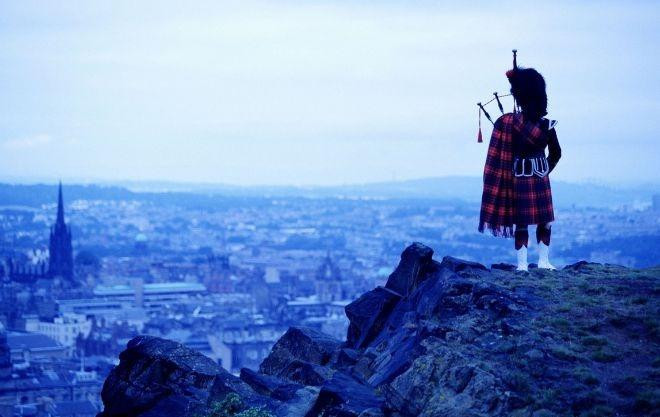A Comprehensive Guide to Kilts: Unveiling the Essence of Scottish Attire!
Introduction:
Step into the enchanting world of Scottish culture, where traditional attire holds a deep-rooted significance. At the heart of this rich heritage lies the kilt, a garment that embodies Scottish pride and craftsmanship. In this blog, we will embark on a journey to explore the captivating history of kilts, their modern-day significance, and where to find exceptional kilts for sale. Join us as we delve into the essence of Scottish attire, unveiling the timeless charm and allure of the kilt.
The Origins of the Kilt:
The origins of the kilt can be traced back centuries ago, rooted in the Gaelic-speaking regions of Scotland. Although the exact origins are debated, the kilt evolved from the ancient Celtic garment known as the "belted plaid." This garment consisted of a large piece of fabric that was wrapped around the body and belted at the waist. Over time, the belted plaid transformed into the modern-day kilt, which is characterized by its pleated design and distinctive tartan patterns.
The Evolution of the Kilt:
The kilt, a garment steeped in rich history, has traversed a transformative journey throughout the ages. In the 16th century, kilts for men emerged as a powerful symbol of Highland clans, each proudly exhibiting their distinctive tartan pattern. These kilts served not only as a sartorial expression but also as a visual representation of familial and regional pride, forging a sense of unity among the clans.
However, the kilt encountered formidable challenges during the tumultuous 18th and 19th centuries. Following the Jacobite rebellions, kilts for men faced a period of adversity when they were banned as part of the Act of Proscription. This legislation aimed to suppress Highland culture and traditions, including the wearing of kilts. The ban cast a shadow over the kilt, temporarily dimming its significance and forcing it into obscurity.
Fortunately, the winds of change blew in 1782, heralding the uplifting news that the ban on kilts had been lifted. This pivotal moment breathed new life into the kilt, sparking a profound resurgence that would forever cement its place as an integral part of Scottish national identity. Kilts for men, with their resplendent pleats, mesmerizing tartan patterns, and exquisite craftsmanship, once again graced the Scottish landscape.
The lifting of the ban on kilts marked a momentous turning point in history, igniting a rekindled appreciation for Scottish traditions. Kilts for men, no longer confined to the shadows, reemerged as a symbol of pride and resilience. They became a cherished hallmark of Scottish culture, worn with honor on ceremonial occasions and cherished as a tangible connection to ancestral roots.
In the wake of the ban's repeal, kilts for men experienced a renaissance, evolving to meet the diverse preferences and demands of modern wearers. While traditional kilts crafted from fine wool retained their timeless appeal, an array of innovative fabrics entered the scene. Cotton kilts offered a lighter alternative, ideal for warmer climates and casual settings, while leather kilts exuded a rugged charm and contemporary flair.
The resurgence of kilts for men gave rise to an exquisite tapestry of tartan patterns. Clan-specific designs flourished, proudly celebrating the unique heritage of each lineage. From the vibrant hues of the MacLeod tartan to the distinctive hues of the Stewart clan, kilts became personalized emblems of family identity, adorning wearers with a sense of belonging and historical continuity.
Beyond the borders of Scotland, kilts for men began to make their mark on the global stage. The timeless elegance and captivating charm of the kilt captured the imagination of fashion enthusiasts worldwide. Runway showcases and red-carpet events embraced the kilt as a sophisticated and daring statement, melding tradition with modernity in a harmonious fashion symphony.
In conclusion, the journey of the kilt is a testament to its enduring legacy and indomitable spirit. From its origins as a symbol of Highland clans to enduring the trials of a ban and subsequent revival, kilts for men have emerged stronger than ever, etching themselves firmly into the fabric of Scottish national identity. Today, these remarkable garments continue to evoke a sense of pride, heritage, and timeless allure, encapsulating the essence of Scotland's rich cultural tapestry.
The Symbolism of Tartan:
Tartan, the distinctive crisscross pattern found on kilts, holds profound significance in Scottish culture. Each tartan pattern represents a specific clan or region, with variations in colors and patterns symbolizing familial or geographic ties. Today, tartans extend beyond clans, with various tartans created to commemorate events, organizations, and even countries. Wearing a tartan kilt is a way to honor one's heritage and celebrate Scottish identity.
Modern-Day Kilts:
In contemporary times, kilts have evolved to accommodate diverse tastes and occasions. While traditional kilts are typically made from wool, there are now kilts available in various fabrics, including cotton and leather. Utility kilts have gained popularity for their practicality, featuring pockets and additional functionality. Modern kilts also come in different lengths, allowing individuals to choose between traditional knee-length kilts or more contemporary styles.
Kilts for Sale: Embracing Scottish Attire:
If you're captivated by the allure of kilts and wish to own one, there are numerous options to explore. ScotlandKilt.com is an esteemed online retailer specializing in high-quality kilts and Scottish attire. Their extensive collection features a wide range of tartans, including clan-specific tartans, as well as modern and hybrid designs. With a commitment to craftsmanship and attention to detail, ScotlandKilt.com offers kilts made from premium materials to ensure both authenticity and durability.
The Cultural Significance of Kilts:
Beyond being stylish garment, kilts hold deep cultural significance in Scotland. They are often worn during traditional Scottish ceremonies such as weddings, Highland games, and festivals. Kilts also play a role in military uniforms, with regiments having their unique tartans. Scottish heritage is proudly showcased through kilts, serving as a symbol of identity and a connection to the country's rich history.
Caring for Your Kilt:
To ensure the longevity of your kilt, proper care is essential. Kilts should be dry cleaned or hand washed using mild detergent. It is important to follow the care instructions provided by the manufacturer to prevent any damage to the fabric or the pleats. After washing, kilts should be hung or laid flat to dry to maintain their shape. It is recommended to store kilts in a cool, dry place, preferably folded with tissue paper to prevent any creasing or wrinkling.
Accessories to Enhance Your Kilt:
Complete your Scottish attire with a range of accessories that complement the kilt. Sporrans, the small pouches worn at the front of the kilt, are not only functional for carrying small items but also add a touch of elegance to the outfit. There are various types of sporrans available, from dress sporrans for formal occasions to day sporrans for casual wear. Other accessories include kilt pins, which are decorative pins worn on the front apron of the kilt, and ghillie brogues, traditional Scottish shoes with laces that wrap around the ankles.
Kilts in Popular Culture:
Kilts have made their mark in popular culture, showcasing the enduring appeal and versatility of this traditional garment. Films like "Braveheart" and "Outlander" have brought kilts into the mainstream, with their characters proudly donning kilts onscreen. Additionally, Scottish musicians, such as bagpipe players and traditional folk bands, often incorporate kilts into their performances, further promoting the cultural significance and artistry of Scottish attire.
The Global Influence of Kilts:
While kilts have deep roots in Scottish culture, their influence has spread across the globe. Scottish communities and enthusiasts around the world proudly wear kilts to celebrate their heritage and participate in Scottish festivals and events. International Highland games and Scottish gatherings provide platforms for individuals to showcase their kilts, fostering a sense of camaraderie and cultural exchange among diverse communities.
The Kilt as a Fashion Statement:
Beyond its traditional associations, the kilt has also found its place in the fashion world. Designers have reimagined kilts, incorporating contemporary elements and experimenting with fabrics, patterns, and silhouettes. Kilts have graced runways and red carpets, reflecting the timeless appeal and adaptability of this iconic garment. Whether worn as a fashion statement or as a way to honor one's heritage, kilts continue to captivate fashion enthusiasts worldwide.
Conclusion:
The kilt stands as a testament to Scottish heritage, encapsulating the essence of tradition, craftsmanship, and cultural identity. From its ancient origins as the belted plaid to its modern-day variations, the kilt has endured the test of time, evolving while maintaining its symbolic significance. Whether worn during traditional ceremonies, military parades, or everyday life, the kilt holds a special place in the hearts of Scots and enthusiasts worldwide.
When seeking exceptional kilts for sale, ScotlandKilt.com is your trusted source for premium-quality Scottish attire. With their wide range of tartans, attention to detail, and commitment to authenticity, they offer a gateway to embracing the allure of Scottish culture.
Step into the world of kilts and let this iconic garment weave its magic into your life. Embrace Scottish attire's legacy, history, and artistry, and experience the pride and connection it brings. The kilt is more than just a piece of clothing—it is a symbol of tradition, resilience, and the enduring spirit of Scotland.


Comments
Post a Comment